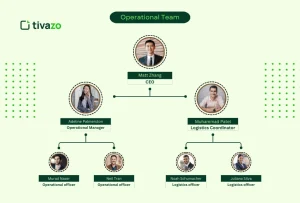In a time when workplace calendars are filled with back-to-back video calls, standing recurring check-ins, and spontaneous huddles, a simple no meeting day sounds both refreshing and revolutionary. More businesses beginning to appreciate the positive impact of giving workers a day where they do not have to sit in endless meetings while simultaneously maintaining face-to-face collaboration without boundaries or borders. Employees being telecommuters does not eliminate the concept of the no meeting day, however the increase in the use of virtual communication tools has contributed to the need for a designated day, per week, to refocus workers on productivity.
What is a no meeting day? And why are top companies using it as part of their culture? In this article, we will look at what a no meeting day consists of, the visible and invisible factors that may be contributing to its popularity, the unintended benefits of a no meeting day, and how your company can successfully implement it.
Key Takeaways:
- What Is a No Meeting Day?
- Why Meetings Can Be a Problem
- Benefits of No Meeting Day
- Tips to Successfully Implement a No Meeting Day
- Common Challenges & How to Overcome Them
- Final Thoughts
What Is a No Meeting Day?

A no meeting day is a day when employees either do not have to attend or are not allowed to attend meetings. A full workday devoted to uninterrupted work.
What makes a no meeting day? and its key characteristics are:
- No scheduled internal or external meetings
- Encouragement for deep work, creativity, and flow
- Utilization of asynchronous communication tools (i.e.: slack, email, loom)
Origins and Trends
It’s an initiative that was adopted by many of the tech heavyweights including Facebook, Atlassian, and Shopify. These organizations found productivity increased greatly if employees had one or more dedicated days per week for distraction-free focus.
Why Meetings Can Be a Problem
While meetings are important in terms of collaboration and decision-making, too many meetings hurt employee performance, morale and creativity.

⚠️ Important issues emerging from meeting overload:
- Interrupts focus: If you have back-to-back meetings, it is difficult to work effectively.
- Creates burnout: After sitting in hours of video calls, employees feel exhausted.
- Reduced output: Based on the time allocated to meeting work, there is less time to do the work.
- Lack of boundaries: With the rise of remote work, it has blurred the work-life line.
📊 Stats That Matter:
- The average employee attends 62 meetings per month.
- 31 hours per month are spent in unproductive meetings.
- 67% of employee respondents report that too many meetings distract them from deep work.
It is clear that adding a no meeting day is not just a nice idea to have—it is a business imperative.
5 Surprising Benefits of No Meeting Day

As there are many measurable benefits to establishing a no meeting day, far beyond giving employees more free time to fill in their calendars.
Let’s look at 5 beneficial effects:
1. Increases Deep Work and Productivity
A no meeting day allows employees to achieve deep work – uninterrupted periods of deep focus where creative and analytical thinking occurs.
What is the benefit?
- Less distractions = More completed tasks
- More focus and output
- Provides room for planning and thinking long-term success
🔹 Example: Engineers at Atlassian stated a productivity rise of 23% after no meetings days were implemented mid-week.
2. Increases Employee Morale and Mental Health
Employees can a deep breath and have a break from meetings and, in a sense, provide a longer tether to personal time, simultaneously allowing employees to manage their own schedules.
What is the positive?
- Keep free from feeling screen fatigue
- Lowered stress levels and cognitive load
- A healthy work-home life balance
🔹 Case Study: Simple way of implementing no meetings, Shopfiy rolled out no meeting Wednesday, employees reported overall benefits of increased job satisfaction and less burn-out.
3. Encourages Better Time Management
Understanding that there is a set day for focus should give employees a reason to plan their week more effectively and procrastinate less.
What helps here?
- Planning and prioritization skills-raised awareness
- Goal setting and review-work towards something
- More self-directed time
🔹 Pro Tip: Suggest that employees utilize their time blocks(find them in your calendar) for project work on no meeting day.
4. Enhances Team Communication
Yes, the meetings are suspended for the day, but communication doesn’t stop. Instead communication improves. Teams develop clear purposefully; async communication.
Here’s why this is great:
- Encourages updates (via email, slack, then use your notetaking tool)
- Reduces last-minute requests/check-ins
- Creates cultural norms of trust and clarity
🔹 Bonus: Written communication leads to better documentation and clearer communication.
5. Provides Space for Innovation, Imagination, Creativity
Silence breeds creativity. Without the pressure of meetings, employees can engage in “blue sky thinking” or work on passion projects.
What emerges:
- New ideas and innovations
- More room for strategy thinking
- More learning, experimenting time
🔹 Fun Fact: Google famously started “20% time” where they allowed employees to focus on their creative things while still doing their course work. You will find the same applies with No meeting days, you will start from something similar.
✅ Tips to Successfully Implement a No Meeting Day

Even though it’s simple, having a no meetings day consistently is an intentional act. Here’s how to stay intentional:
1. Pick a Day
- Often the middle of the week works best (e.g. Wednesday)
- Try to avoid Mondays (next week planning) and Fridays (end week wrap ups)
2. Get Leadership Buy-in
- Leadership needs to lead by example
- Managers must actively defend their teams from no meeting day violations
3. Communicate Expectations
- Let teams know what’s expected
- Clarify which tools to use for async updates
4.Be Consistent
- Don’t skip weeks unless absolutely necessary
- Re-evaluate quarterly to measure effectiveness
❌ Common Challenges & How to Overcome Them
There can be obstacles present when establishing a no meeting day especially in more classical or fast move workplaces. Below are the common barriers and useful ways to help eliminate barriers.
Challenge #1: Management Resistance
Management may fear that a no meeting day may limit their ability to gauge productivity or communicate rapidly. This could be dispelled by providing research data that demonstrates an increase in productivity as a result of utilizing no meeting day, plus it is emphasized that a no meeting day can support focused workflows without sacrificing the quality of communication.
Challenge #2: Client Meetings
Client demands may arise that prevent a no meeting day from being enacted during the week. One solution in this instance is to block a no meeting day, communicating with clients at the outset about your no meeting day intentions, and proposing alternative times to meet in order to appease client demands without breaking the no meeting day policy.
Challenge #3: Time Zone Differences
For organizations with global teams this can be difficult. An option to rectify the issue is to determine one day globally as no meeting day, therefore regional teams can have ownership towards planning their own no meeting day, now everyone wins without affecting global teamwork.
Challenge #4: Employees Making It A Free Day
Some employees may think of no meeting day as a free day versus dedicated day to focused work. In this case, enable employees to create a plan with goals in mind for the day, block time for specific tasks, and maintain accountability of the no meeting day with regular check ins.
If you can tackle these challenges with clear communication and appropriate flexibility, it will help your no meeting day be a productive and comfortable part of your team’s routine.
Final Thoughts
A no meeting day is not a fad, or even a fix. It is a real way of working that makes a meaningful difference to teams. In the world where we face overloaded information silos, distractions, and disruptions, the one thing a company can do to make employees happy is giving employees dedicated, uninterrupted time. Giving employees dedicated time is the wisest way a company can spend its money. It allows people to sink into work, mentally recharge, and provide new approaches.
Recap of important benefits:
- Improves focus and deep work: Employees can fully focus on their work without constant slowing turns of distractions.
- Aligns and Reinforces Mental Wellbeing: The reduce in meeting overload reduces stress and screen fatigue.
- Improves communication and planning: Employees will be encouraged to communicate in clearer, asynchronous ways in an aim to better plan their time.
- Supports innovation and ownership of time: More space to think creatively, and have ownership of their time, in a distributed way.
If you start small, with one day a week without meetings for 30 days, you will see a difference in productivity and morale. After that month, assess what happened and adapt as needed—you might find that there is better or richer work, and thus better outcomes, produced with less meetings.
Are your meetings spiraling? Is your calendar stuffed with meetings all day long? Then it is finally time for you to reclaim your calendar, and maybe lift the morale and productivity, with a no meeting day. Try it, and see how giving your team some space to think will benefit them.
FAQs:
How do you say no meeting today?
You can notify your coworkers or team by saying, "Let’s remember that today is our no meeting day, and let’s do our work undisturbed,” or simply, "Today is a no meeting day for us so let’s increase productivity and do some deep work."
What companies have no meeting days?
Some progressive companies, including Asana, Basecamp, and Shopify, have embraced a no meeting day policy that helps reduce distractions and create a more focused and healthy work environment for their employees.
What is the no meeting day policy?
A no meeting day policy is one or more selected days each week in which no internal or external meetings are allowed. It provides our employees an uninterrupted block of time in which to focus on deep work, plan or recharge, without the interruptions of meetings.
How do I politely say no to meeting up?
You can say, "Thanks for the invitation, but I am not available to meet at that time," or "I am engaged in some priority work today and will not be available to meet." Being honest and respectful of your schedule is always the best advice.




